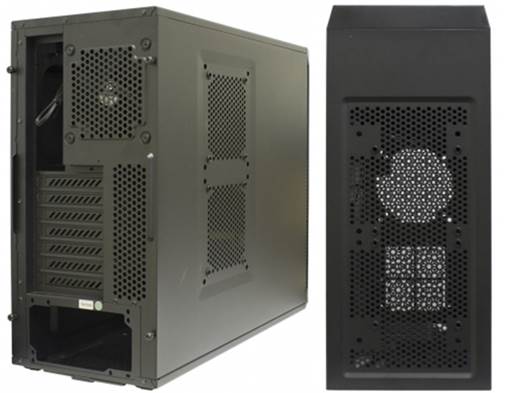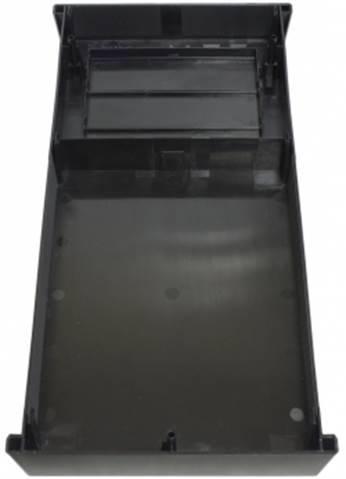In this review, game system cases belong to
two different price’s catalog: while Corsair Carbide 200R is one of the most
reasonable options of game, Thermaltake Chaser A41 comes from more primary
price range.
We have been familiar with high - ranking
model of Carbide case of Corsair launched before. We tested 300R, 400R and 500R
and were satisfied in generally, but 300R model which was the most affordable
demonstrated that was the less attractive product of them. 200R that has just
released in 2013 is significantly cheaper, and lower barriers in our
expectations and demand, but Corsair goes so far from that cost-cutting,
doesn’t it?
The second case that we intend to discuss, Chaser
A41 of Thermaltake, is almost twice more expensive than Corsair Carbide 200R is.
It’s in series of Chaser game, which was launched in 2011 including Chaser MK-I
(the original form of the product line) and Chaser A31 (different from A41 on the
external design and a larger drive shelf).
Certainly, it's not really accurate to
compare these two products directly because of double price difference, but we
do not have the same level of cases to compare them.
Component testing
Corsair Carbide 200R
Carbide is the most reasonable price and 20USD
cheaper than the next model in the same series, Carbide 300R. According to the
manufacturer's website, 200R goes with a suggested price of 69.99USD.

Corsair
Carbide 200R
Corsair Carbide 200R looks surprisingly impressive
compared to its price. It has blank outside, blue USB 3.0 connection, metal rim
around the headphone and microphone jacks, and a rotate button that combines
Power and Reset. The exterior design looks more valuable than Carbide 300R;
however, the blank front panel (instead of a boring black gird) looks
interesting.
However, there are many small mistakes in
practice. For example, the shield of removable compartment doesn’t fit snugly
because of lose screws. Rotate button is crunched when pressing and it doesn’t
always make you realize if you've pressed or not when touching.
On the bottom, we might pay attention to a dust
filter, which can be removed, in front of PSU room and space for 120/140mm fan.
Bottom is not typical for an affordable PC case:

Tripod
is the rubber sheet stuck on base.
In spite of simplification and inexpensiveness,
they are beautiful when keeping your computer stable. Instead of typical hard
plastic foot of product for new users, they are rubber sheets stuck on base,
pressed under bracket bottom. Simply and effectively - we will see more
examples of approaching this design in exploring our Carbide 200R.

Back panel does not provide holes for a fluid
cooling system
The back panel does not provide holes for a
liquid-cooling system that has become typical functionality of any computers positioned
as a gaming product. However, it's quite normal here. We do not think many
people want to develop liquid-cooling system in case for new users.
Expanding-slot hook are reused. They are fixed
with screws. Ventilation is fixed with buffer of absorbing vibration. You do
not often see that such function, even in higher-priced products.
Fan is mounted on top and on sides is also
equipped with the same absorbing vibration buffer. The buffers on the bracket
holes 120mm fan by default but you can also use them in the bracket hole for
140mm fan.

I/O
ports, buttons and indicators of Carbide 200R
All I/O ports, buttons and indicators of
Carbide 200R are placed in line in the upper part of front panel, on 5.25-inch
room. We can see here two 3.0 USB ports (the spa far enough), headphone and
microphone connection and a combined button Power/Reset. There is white indicator
Power and Disk underneath the rear. They are bright but not dazzling.

The
side panel has a lot of fasteners hold in the top and bottom
The panel has a lot of fasteners that hold
in the top and the bottom of the popular-priced case. That is not totally
problem because the large cable chamber is followed to put panel into place
easily even if there are many hidden cables behind the board. Other panels cannot
have the same problem because there are no parts protruding side of them.
Front panel is blank, front fan takes the
air through cut-lines along the edges of the decorative facade. Cut-lines are
protected by a dust filter.
Location for optional fans on bottom, top
and side panel is lack of such filters, but fortunately, fans that are installed
before have such protection.

Location
for optional fans on bottom, top and side panel is lack of such filters